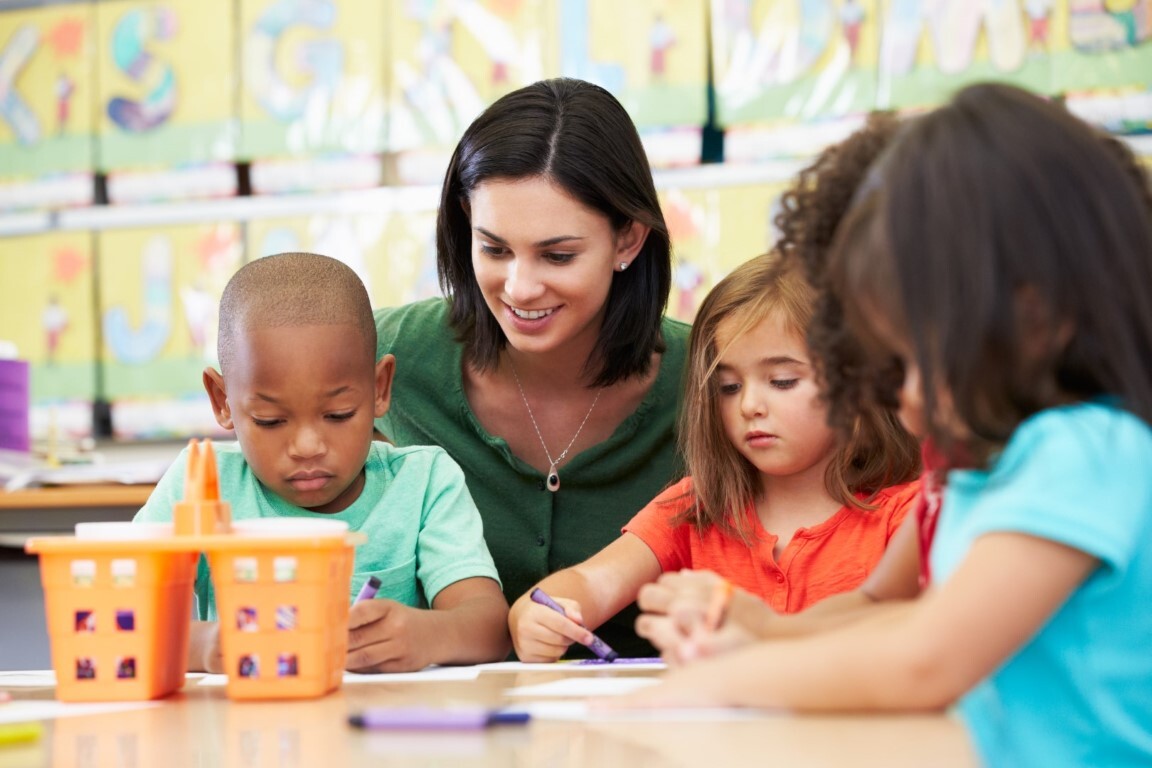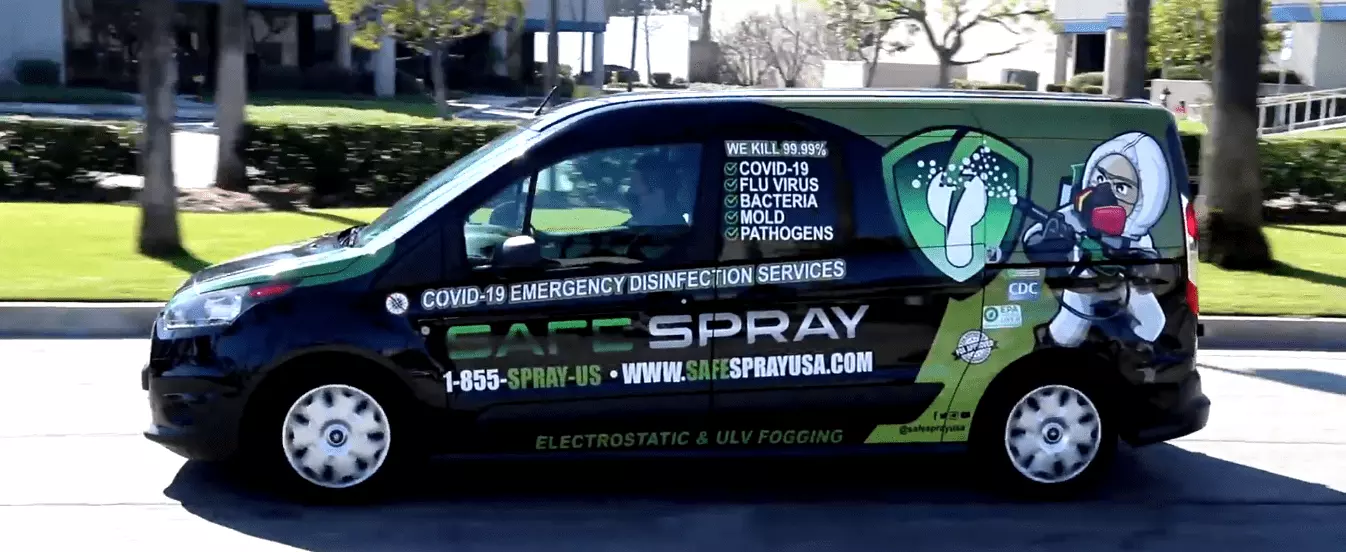Get a Free Estimate
Your information will not be shared. Safe Spray will send you a custom estimate.

The arrival of cold and flu season in 2023 – 24 brings a new set of challenges for preschools, daycare centers, and early childhood education facilities. With the ongoing need to protect children and staff from infectious diseases, it’s important to be well-prepared and proactive.
Let’s review six key strategies to help you prepare your preschool for the upcoming cold and flu season.
1. Understand Cleaning, Disinfecting, and Sanitizing
Understanding the distinctions between cleaning, disinfecting, and sanitizing is the first step in maintaining a hygienic environment. Each of these processes serves a specific purpose:
Cleaning:
Cleaning involves the removal of dirt, grime, and some germs from surfaces. It typically uses soap and water, which helps physically remove contaminants but may not kill all bacteria or viruses.
Disinfecting:
Disinfection goes a step further by killing or inactivating bacteria and viruses on surfaces. It involves using disinfectants that are specifically designed for this purpose.
Sanitizing:
Sanitizing aims to reduce the number of bacteria or viruses on surfaces to a safe level according to public health standards. This process typically involves using sanitizers approved for this purpose.
During cold and flu season, it’s essential to implement a combination of cleaning and disinfecting to maintain a safe and healthy environment for your preschool. Routine cleaning will remove visible dirt and grime, while disinfection will help kill any harmful pathogens that might be present.
2. Clean and Disinfect High-touch Surfaces and Objects
Frequent contact with contaminated surfaces and objects is a primary way that cold and flu viruses can spread. In a preschool setting, children touch toys, doorknobs, tables, and other high-touch surfaces regularly.
You may wonder, “how long does the flu virus live on surfaces?” The flu virus can live on some surfaces for up to 48 hours. To minimize the risk of disease transmission, focus on cleaning and disinfecting these areas more frequently.
Toys: Clean and disinfect toys regularly, especially those that children share or put in their mouths. Follow manufacturer recommendations for cleaning or sanitizing toys, and ensure they are thoroughly dried before allowing children to play with them.
Doorknobs and Light Switches: These are commonly touched surfaces that can harbor viruses. Wipe them down with disinfectant wipes regularly.
Tables and Countertops: Ensure that surfaces where children eat, play, and work are cleaned and disinfected regularly, especially before and after meals and activities.
Bathroom Fixtures: Toilets, sinks, and faucets in the restroom should be cleaned and disinfected daily, if not more frequently.
3. Conduct Routine Cleaning and Disinfecting
If you want to know how to prevent the common cold, cleaning and disinfecting is one of the best and simplest ways. Ideally, this should become a routine part of your daily operations.
Establish a cleaning schedule that includes specific times and frequencies for cleaning and disinfecting different areas and items. Ensure that staff members are well-trained in these procedures and that they follow recommended guidelines.
4. Clean and Disinfect Properly
Proper cleaning and disinfection require following specific steps to achieve the desired results:
Preparation: Wear appropriate personal protective equipment (PPE), including gloves and masks, and ensure the area is well-ventilated.
Cleaning: Remove visible dirt and grime with soap and water. This step is necessary before disinfecting because organic matter can interfere with the disinfectant’s effectiveness.
Disinfection: Use an EPA-approved disinfectant, following the product’s instructions for concentration and contact time. Ensure that the disinfectant is allowed to sit on the surface for the recommended duration before wiping it away. This “dwell time” is required for the disinfectant to work effectively.
Proper Tools: Use clean, dedicated cloths or disposable wipes for each surface, and don’t cross-contaminate by using the same cloth for multiple surfaces.
Safe Disposal: Dispose of used cleaning materials and waste safely and appropriately. Make sure trash cans are regularly emptied and lined with trash bags to minimize contact with potentially contaminated materials.
5. Use Products Safely
When selecting cleaning and disinfecting products, it’s essential to prioritize safety for both the environment and the people using them. Consider the following:
EPA-Approved Products: Use disinfectants and sanitizers that are registered with the Environmental Protection Agency (EPA). These products have been proven effective and safe for their intended use.
Read Labels: Always read and follow the manufacturer’s instructions on product labels. Pay attention to any specific safety guidelines or precautions.
Ventilation: Ensure proper ventilation in the areas where you are using cleaning and disinfecting products. Good ventilation can help reduce the inhalation of fumes.
Storage: Store cleaning and disinfecting products out of reach of children and in a cool, dry place, as recommended by the manufacturer.
6. Handle Waste Properly
Effective waste management is an often-overlooked aspect of maintaining a safe and sanitary environment. Proper waste disposal is essential to prevent the spread of diseases. Here are some key waste management practices:
Trash Bins: Ensure that trash bins are placed in convenient locations and regularly emptied to avoid overflowing waste.
Lining Trash Cans: Use liners or trash bags in waste containers to prevent direct contact with potentially contaminated materials.
Secure Disposal: Make sure that hazardous waste, such as used tissues, masks, and gloves, is securely disposed of in labeled bags or containers.
Education: Educate staff about proper waste disposal practices, including the safe handling of used PPE and cleaning materials.
To help parents and staff understand these steps for cold and flu virus prevention, be sure to provide clear and accessible information. Regular communication and training will ensure that everyone involved in your preschool is aware of the measures in place to protect against cold and flu viruses.
Contact Safe Spray to Disinfect and Sanitize Your Preschool for Cold and Flu Season
Preparation for cold and flu season in a preschool setting involves a combination of regular cleaning, disinfection, and effective waste management. By understanding the differences between these processes, implementing routine cleaning and disinfection schedules, and using products safely, you can create a safer and healthier environment for both children and staff.
Contact Safe Spray to disinfect and sanitize your preschool, daycare, or other school this cold and influenza season. We serve the greater Los Angeles area and are happy to provide a free quote.

Get Your Free Quote Today!
We also offer a no obligation, free onsite service estimate.

 Get a free Consultation
Get a free Consultation